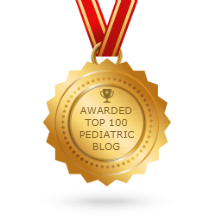© 2017 Roy Benaroch, MD
What if there were something cheap and effective for cold symptoms – something you could buy at your grocery store. Heck, you probably already have it in your house. It’s undergone at least three solid studies showing that it helps alleviate cough more effectively than established cold medicines. And it’s safe for just about anyone age 12 months or older.
Cool, huh? It’s honey. Good old honey, the stuff beloved by Winnie the Pooh, made by bees, and especially tasty drizzled on a peanut butter sandwich. You shouldn’t give raw, unpasteurized honey to babies less than 12 months of age, but other than that it’s safe as can be. Try it next time you or your child has a cough. (** TIP ONLY FOR ADULTS: I’m told mixing equal parts of honey, lemon juice, and Canadian whiskey together makes a fine toddy that will make it feel like you aren’t even sick. Until you pass out. This is for parents, not children.)
And that should be the end of the story. But what if instead of honey, you mix it with some other ingredients, double the price, and sell it in the medicine aisle? Then you’ve got Zarbee’s, which (according to their website), is the #1 pediatrician-recommended cough medicine sold for children less than 6.
Keep in mind Zarbee’s wasn’t what was studied in those clinical trials. I can’t find any clinical trials of Zarbees. Even the company that makes it carefully tiptoes around that issue on their website, where they avoid claiming that there’s any evidence that their products effectively treat any symptoms. They “support immune systems” and “soothe”, but those are just weasel-phrases that can’t be tested. That’s why the packaging also says, in all-capitals, “THESE STATEMENTS HAVE NOT BEEN EVALUATED BY THE FOOD AND DRUG ADMINISTRATION. THIS PRODUCT IS NOT INTENDED TO DIAGNOSE, TREAT, CURE, OR PREVENT ANY DISEASE.”
Though the Zarbee’s line started with just the cough syrup, they’ve now got a variety of products to treat symptoms, all based on “wholesome ingredients” – meaning, as far as I can tell, “things not tested for safety or effectiveness in children.” But I guess they expect a pass, because, you know, the bees and all.
Look, I know coughs and colds are frustrating and miserable. If there were anything that actually worked, whoever comes up with it will make a mint. Until then, we’ll continue to see the dizzying aisle of hundreds of competing medicines – and every few years, a new one will become popular. Remember the one “invented by a teacher”? Or that adorable mucus-monster that showed up a few years ago? Now we’ve got Zarbee’s. None of these products works any better than any of the others, and none work any better than typical home remedies. But no one will make any money selling chicken soup and honey, so I’m sure we’ll bee (ha!) seeing more products from the Zarbee’s line. Save your money.


















Recent Comments